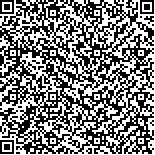| 摘要: |
| 采用Hemacolor 染料对泥蚶(Tegillarca granosa)、毛蚶(Scapharca subcrenata)、鲫鱼(Carassius auratus)、牛蛙(Rana catesbeiana)、中华鳖(Pelodiscus sinensis)等5 种水产动物血细胞涂片进行染色, 利用光镜和扫描电镜两种方法对5 种动物的血红细胞的表面结构和形态特征进行观察。结果发现: 泥蚶、毛蚶两种蚶科贝类血红细胞具有嗜酸性或嗜碱性颗粒, 而鲫鱼、牛蛙、中华鳖3 种水产脊椎动物则没有; 从蚶科贝类到牛蛙, 血红细胞直径不断增大, 而中华鳖血红细胞直径则变小; 血红细胞长宽比也符合这一变化趋势。泥蚶和毛蚶血红细胞表面有明显的波状褶皱和较深的且直径较大的凹陷; 3 种脊椎动物血红细胞表面也发现了直径较小的凹陷, 但未发现皱褶的存在, 且表面凹陷程度逐渐减弱。分析认为动物不断进化, 其活动能力和生境也在变化, 使得动物血红细胞发生相应的变化, 以获得最大的气体交换效率与细胞稳定性。本研究以期对血红细胞形态差异及进化规律进行探讨。 |
| 关键词: 水产动物 血红细胞 形态特征 进化 |
| DOI: |
| 分类号: |
| 基金项目:浙江省自然科学基金(Y3100087); 宁波市国际合作项目(2010D10017) |
|
| Comparison of erythrocytes of five aquatic animals and their evolution |
|
|
| Abstract: |
| This paper focuses on the morphological characteristics and microstructure of erythrocytes of five aquatic animals, in order to study the morphological diversity and evolution of erythrocytes. The blood smears of five aquatic animals, bloody clam (Tegillarca granosa, Scapharca subcrenata), Carassius auratus, Rana catesbeiana and Pelodiscus sinensis, were stained by Hemacolor stain. The surface structure and morphological characteristics of erythrocytes were examined by light microscope (LM) and scanning electronic microscope (SEM). The erythrocytes of bloody clams (Tegillarca granosa & Scapharca subcrenata) had basophil granular or/and eosinophilic granular, but none was found in vertebrates erythrocytes. The size of erythrocytes increased from the two bloody clams to Bull frog (Rana catesbeiana); while the size decreased afterwards; the variation of aspect ratio and nucleocytoplasmic ratio of erythrocytes follow this trend in a similar way. The undulate fold and depression on the erythrocytes of the two bloody clams were observed apparently, and the depression was deep and wide. The surface depression was also obvious in the erythrocytes of vertebrates, although the depression faded away gradually, and no distinct surface fold was examined. These results indicated that the changes of animal erythrocytes resulted from the evolution of animals, activities and habitats, in order to obtain the biggest gas exchange efficiency and the stability of the cells. |
| Key words: aquatic animals erythrocyte morphological characteristics evolution |
